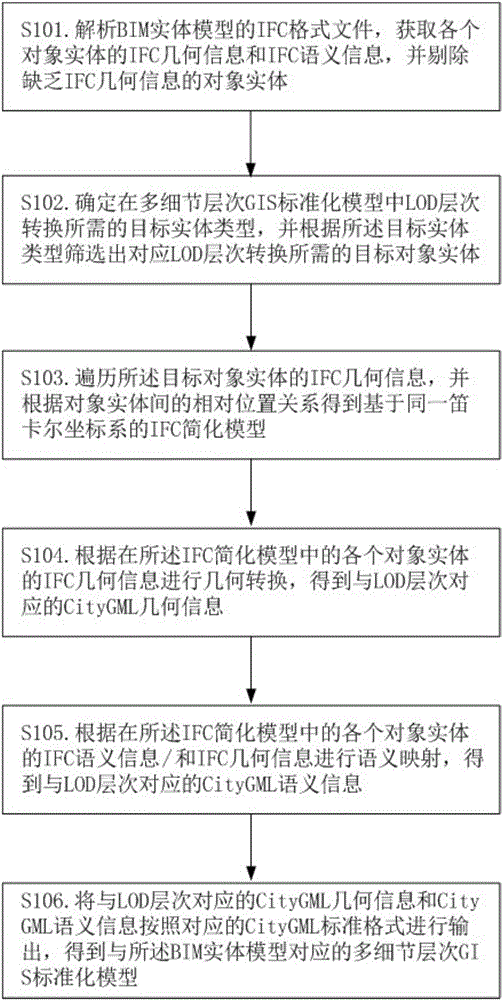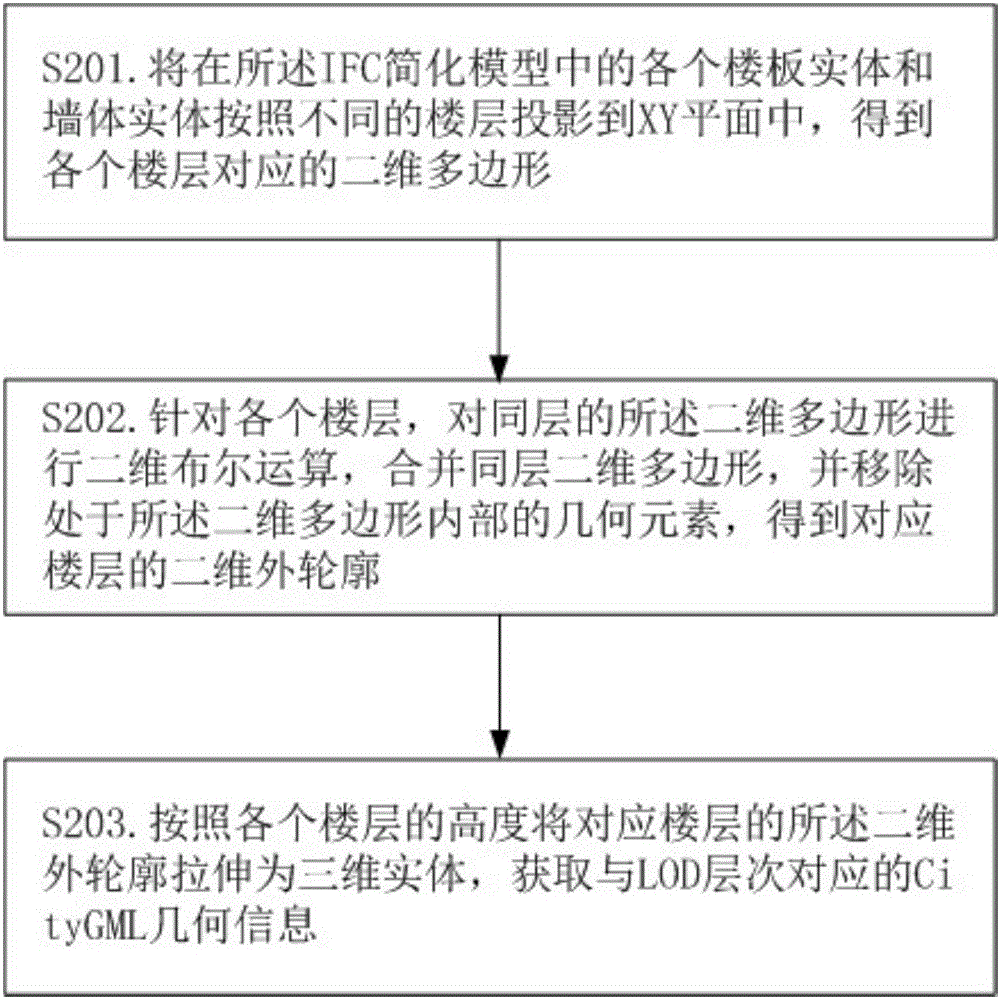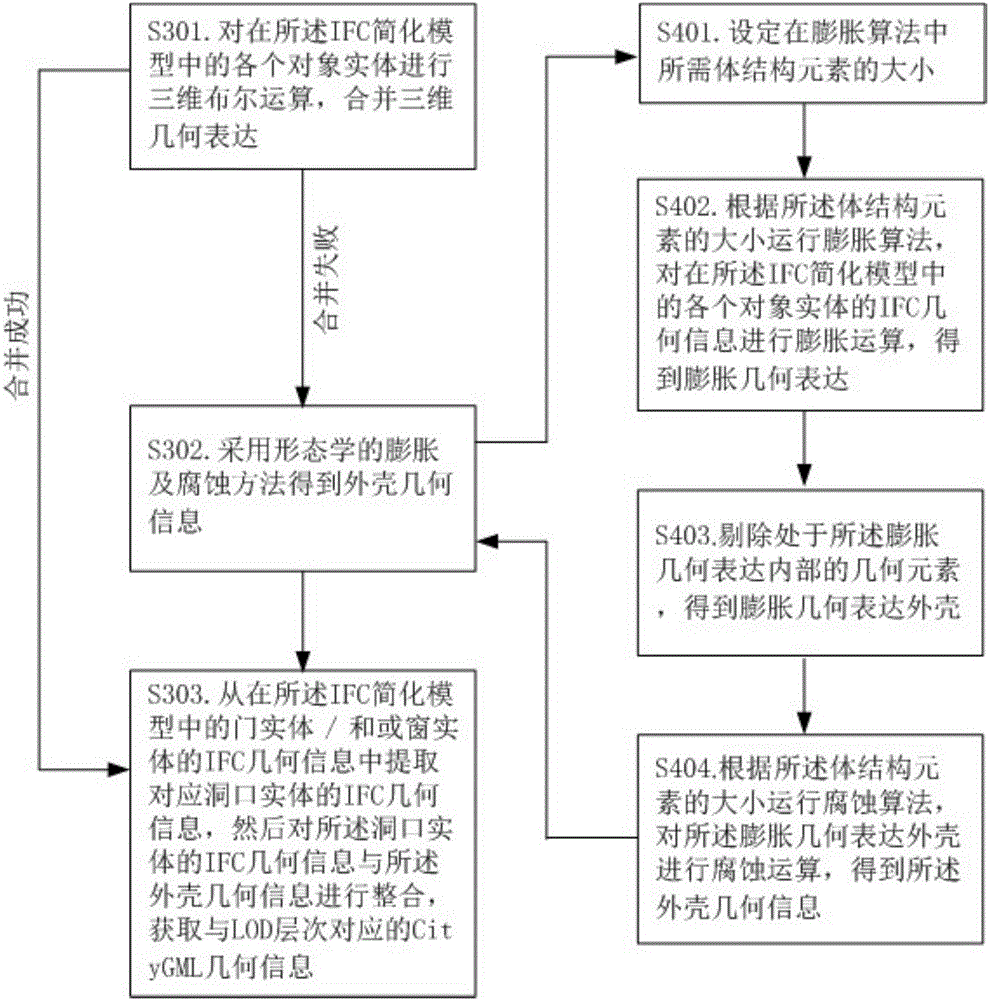Method for converting BIM entity model into multiple levels of details (LOD) GIS standardized model
A technology with multiple levels of detail and solid models, applied in the field of geospatial information systems, can solve problems such as the difficulty in realizing the conversion and mapping between IFC format and CityGML format, and does not consider the screening and classification of indoor element information, so as to facilitate practical promotion and application, and facilitate The effect of geometric semantic information interoperability and high conversion accuracy
- Summary
- Abstract
- Description
- Claims
- Application Information
AI Technical Summary
Problems solved by technology
Method used
Image
Examples
Embodiment 1
[0035] figure 1 Shows the flow chart of the method for converting the BIM entity model into a multi-level-of-detail GIS standardized model provided by the present invention, figure 2 It shows a schematic diagram of the geometric transformation process of the LOD1 or LOD2 level for the IFC simplified model provided by the present invention, image 3 It shows a schematic diagram of the geometric transformation process of the LOD3 level for the IFC simplified model provided by the present invention, Figure 4 It shows a schematic diagram of the geometric conversion process of the LOD4 level for the IFC simplified model provided by the present invention, Figure 5 It shows a schematic flow chart of semantic mapping according to the IFC semantic information and IFC geometric information of each object entity provided by the present invention, Image 6 A schematic diagram showing the semantic information structure of the main IFC object entities in the existing IFC format, Figu...
PUM
 Login to View More
Login to View More Abstract
Description
Claims
Application Information
 Login to View More
Login to View More - R&D
- Intellectual Property
- Life Sciences
- Materials
- Tech Scout
- Unparalleled Data Quality
- Higher Quality Content
- 60% Fewer Hallucinations
Browse by: Latest US Patents, China's latest patents, Technical Efficacy Thesaurus, Application Domain, Technology Topic, Popular Technical Reports.
© 2025 PatSnap. All rights reserved.Legal|Privacy policy|Modern Slavery Act Transparency Statement|Sitemap|About US| Contact US: help@patsnap.com



